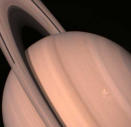|
|
|
| | | :: Friday, February 28, 2003 :: |
Remember...
This is a long post, so I apologize. I wrote this one month ago today. Four days later, it became an entirely different piece. To be honest, I have not gone back and read it since, not even today as I'm posting it here. But I think it not only has things to say, it even has new things to say that it didn't when I wrote it. Anyway, here goes...
I always feel a twinge of guilt on January 28.
I remember where I was when I heard. I wasn't born when Kennedy was assasinated, but like most of my generation, I remember where I was when I heard that the Space Shuttle Challenger had exploded.
I was in the boys' locker room for the gym at Huntsville Middle School. I was in P.E. when it happened, so I didn't watch it. It was not until later in the day that I would first see those indelible images, and thankfully knew what to expect by the time I finally saw them. I cannot imagine what it would have been like to watch that as it happened.
I was in the boys' locker room for the gym at Huntsville Middle School. We were getting ready, as the news began to spread. The boy that told me had not actually seen it, he had heard from someone else. Who in turn had no doubt heard from someone else. But the person who told me had no emperical knowledge, just the word of mouth he had heard.
I don't feel the twinge of guilt because I initially scoffed at him. I feel the twinge of guilt because I think I actually did reassure him.
That he was wrong. That he had heard wrong, or the person who had told him was wrong.
Because it could not happen. It simply couldn't.
The Space Shuttle ... the Space Shuttle, among the greatest of man's creations ... does not just blow up.
It doesn't.
I mean, for heaven's sake, it's the Space Shuttle.
It couldn't happen.
But it did.
I feel a twinge of guilt every January 28 at the thought that that student, whoever he was, had to find out twice that day that Challenger had exploded.
It would be over two and a half years before Americans returned to space. Two and a half years.
But the two and a half years to take that next step, to try again, was nothing compared to the healing time. The healing still is not finished, the scars are still fresh.
Today is January 28, 2003. It has been 17 years since that tragedy.
It has been 17 years, and in November, NASA will complete the goal of Mission 51-L.
It has been 17 years, and in November, 2003, NASA will launch a teacher into space.
The healing, after 17 years, still continues.
Today is January 28, 2003. It has been 17 years since the loss of the Space Shuttle Challenger.
The Space Shuttle Challenger exploded on January 28, 1986.
Seventeen years before that, the length of time between then and now, was 1969.
Man was preparing to for the first time set foot on the moon.
In 17 years, we went from the prelimary steps of Apollo, to landing on the Moon (six times), to our first Space Station, to the first joint international mission, to the creation of a new reusable spacecraft, to actually doing science on the Space Shuttle.
Seventeen years later, Columbia is in orbit right now ... doing science on the Space Shuttle.
That's not entirely fair, of course. Also above our heads right now, three men, two Americans and one Russian, are living aboard the International Space Station, their home for four months. Their work there marks the realization of a vision already eyed during that time 17 years before Challenger was lost. And though ISS orbits in Earth's backyard rather than taking humans "out there," it is a major step in the right direction. For the first time in two decades, we are doing things in manned spaceflight that have never been done before. Putting together parts from 16 nations, assembling them 200 miles above the Earth, we are, as John F. Kennedy wanted, doing the things that are hard.
And the resting giant may be beginning to awaken.
Seventeen years ago, when Challenger was lost, I was a schoolchild. Since then, I have marked the anniversary for several more years as a student, and then just as a fan.
Today, for the first time, I mark the anniversary from my desk at Marshall Space Flight Center.
From NASA.
And so maybe it's just the change of perspective, but the momentum seems to be gaining.
In November, a teacher will fly into space.
In February 2004, the first phase of the International Space Station will be complete.
Work has begun on the creation of a new type of spacecraft, an Orbital Space Plan, to aid in Space Station residents' commute into space.
And plans are in place to get serious, very serious, about a new type of propulsion. To get us "there" faster, whereever "there" may be.
And to me, that is what today is all about.
Remembering heroes means honoring their legacy.
When those seven men and women agreed to strap themselves to tons of highly volatile fuels, they did so knowing what the price might be, knowing that they could give their lives.
But they were willing to do so.
They were willing to do so, to open new doors.
How better to honor them, than to see where those doors lead.
Than to explore.
:: back to blog front page ::
|
|


